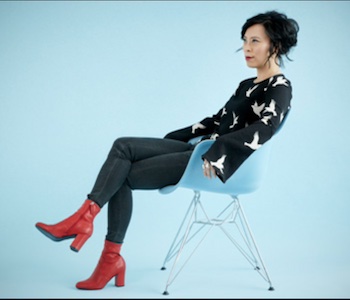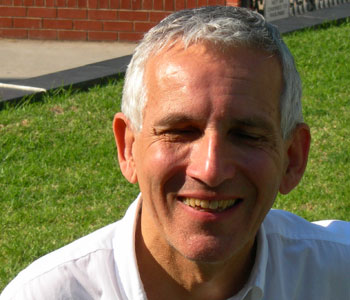Frank Dikötter
The Age of Openness: China before Mao
University of California Press
140 pages, 6 x 9 inches
ISBN 978 0520258815
The era between empire and communism is routinely portrayed as a catastrophic interlude in China’s modern history. The Age of Openness argues instead that the first half of the twentieth century witnessed a qualitatively unprecedented trend towards openness in China.
Far from being in a state of decay that called for revolutionary action, China before Mao was a vibrant and cosmopolitan society. From 1900 to 1949, all levels of Chinese society were seeking engagement with the rest of the world, and that pursuit of openness was particularly evident in governance (with advances made in civil liberties and the rule of law), in greater freedom of movement within the country and outside it, in the lively exchange of ideas in the humanities and sciences, and in the thriving and open markets (which resulted in sustained growth in the economy).
Seen in this light, China’s current leadership is not thriving to establish something bold and new, but rather struggling to rebuild a network of global connections that Mao and his followers had systematically helped to destroy.

When we look at the twentieth century from a critical distance, the communist period in China, as elsewhere, has been a tragic diversion away from engagement with the modern world.
During the recent Olympic Games a common cliché was to talk about China’s “coming out party,” meaning that China was finally opening out to the world. The key point of my book is that China has been fully open to the world before, even if an avalanche of propaganda has managed to consign a very complex and dynamic pre-revolutionary regime to oblivion. The term “warlord” immediately conjures up a time of chaos, war, famine, invasion, rampant inflation and instability. Sympathetic observers of China’s current regime all too easily forget how village elections, free speech, women’s suffrage, the rule of law and a multi-part system were all firmly entrenched before the advent of communism. China before Mao was not a model republic—it suffered from government crises open for all to see. But China before Mao compared well with other countries at the time—and was more open and accountable than China today.
Participatory politics and political diversity expanded hugely from 1900 onwards, starting with an electorate of 40 million in 1912 - a popular representation of some 10 per cent of the population which would not be achieved by Japan until 1928 and by India until 1935. Chinese provinces held legislative elections with electorates of varying sizes and complexities. This culminated, despite many setbacks, in a fully democratic constitution by 1947. Despite many abuses of judicial independence – openly noted and discussed by contemporary critics – important strides were also made in implementing legal reforms and building the rule of law. China produced a crop of jurists with international renown, some serving as judges at the International Court of Justice in The Hague.
The openness of China’s borders meant that both people and ideas flowed back and forth, creating an air of cosmopolitanism. There was a craze for foreign languages. A foreign lawyer noted at the time that “There is certainly no capital in continental Europe where so many members of the government speak English fluently.” Not surprisingly: many had degrees from Cambridge, Oxford, Columbia or Berkeley. They enthusiastically participated in various international forums, such as the League of Nations, and pushed for the country’s adherence to unusually liberal agreements - for instance in the treatment of prisoners.
The roll call of important intellectuals from pre-revolution China, including leading women physicists, is by any measure impressive. Where sociology would be snuffed out by the dogma of Marxist-Leninism after 1949, the field was on par with those in Europe and the United States. The art scene flourished, including film and photography, jazz being so popular that Shanghai was seen as the jazz Mecca.
Recent research simply does not support the previous image of China as ravaged by “imperialism” and “economic collapse.” Modern factory methods were imported, commercial law was created, and a stock exchange opened in 1921. Openness contributed to sustained economic growth over almost half a century in both the city and the countryside, until the outbreak of the Sino-Japanese War in 1937.
There is no denying that the Sino-Japanese War from 1937 onwards was horrendous. But the real destruction was to follow in the years after 1945, as the forces gathered under Mao with the support of Stalin would have finished off even the best of governments.
Some readers may think that the first chapter on participatory politics and legal reform is the key, as these laid the foundation for an open and civil society in China. Others may view economics as the real driver of history, so the last chapter may come as a surprise—the last chapter shows how much was accomplished in China until Japan’s 1937 invasion – from an extensive transport infrastructure and a flourishing industrial base to a very diversified and globally integrated market.
But I like the chapter entitled “Open Minds” (pages 53-81). Here I trace the many ways in which people from all walks of live were familiar with the world beyond their community. During the first half of the twentieth century China’s educated professionals were able to match their foreign peers in many fields, ranging from avionics to zoology. A wide range of books were published, the media world was lively, a huge amount of material from outside of China was introduced.
Ordinary people too were often familiar with global trends, as illustrated magazines and radio programmes disseminated information about every aspect of the modern world, whether new agricultural techniques or the fluctuating price of silk on the international market. A global outlook was promoted by the many modern schools which appeared after 1900, as even small establishments deep inside the hinterland introduced their students to the biographies of great foreign figures like Lincoln, Washington, Napoleon, Watt and Edison.
Perhaps needless to say, a mere handful of students went on to pursue careers as consuls and ambassadors abroad. And only a fraction of the population was fully literate. But opportunities for education were more diverse than ever before, as government organisations, private societies and religious associations, funded by local elites, merchants guilds or foreign benefactors, contributed to the spread of new ideas.
Religious expression was also allowed to thrive in a climate of relative tolerance, while culture bloomed in the absence of a monopoly on power and knowledge. All that diversity was considered “bourgeois” and squeezed out under Mao and his followers. China’s current leaders now scramble to rebuild what their forefathers destroyed.

I like the chapter entitled “Open Minds” ... here I trace the many ways in which people from all walks of live were familiar with the world beyond their community.
Like Russia under Stalin, China under Mao witnessed the disintegration of international links in economics, politics and culture, a gradual closure of minds which constituted a radical reversal of what the country had experienced for several decades. In the end, when we look at the twentieth century from a critical distance, the communist period in China, as elsewhere, has been a tragic diversion away from engagement with the modern world.
So can we interpret the “Open Door” policy since 1978 as a return to a pre-revolutionary tradition of engagement with the world? The optimistic interpretation argues that increased interdependence with the rest of the world might eventually lead to participatory politics and the rule of law. On the other hand, the pessimistic view points at the use of a relative degree of economic openness to shore up the power of a privileged elite at the expense of the civil liberties of ordinary people. Whatever the case may be, the overlooked cosmopolitan experience of the republican era is of even greater relevance today, when even in the People’s Republic globalisation rather than revolution has become the guiding issue for the twenty-first century.




We don't put paywalls. We don't distract you with ads. We don't sell your data.
Please help to keep this running!